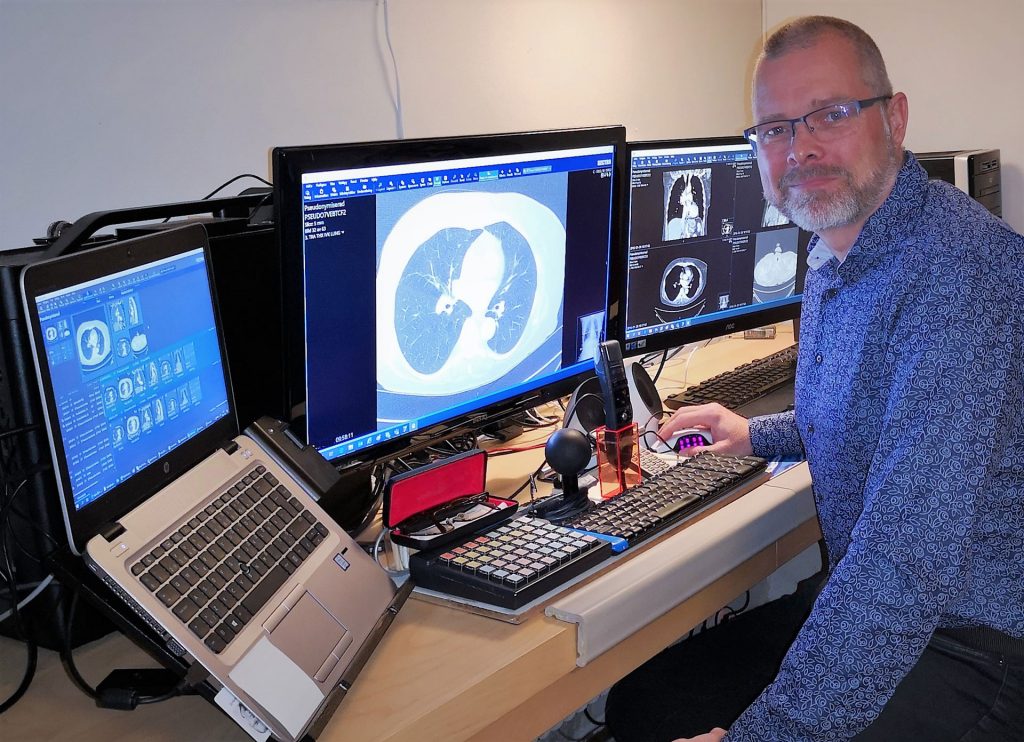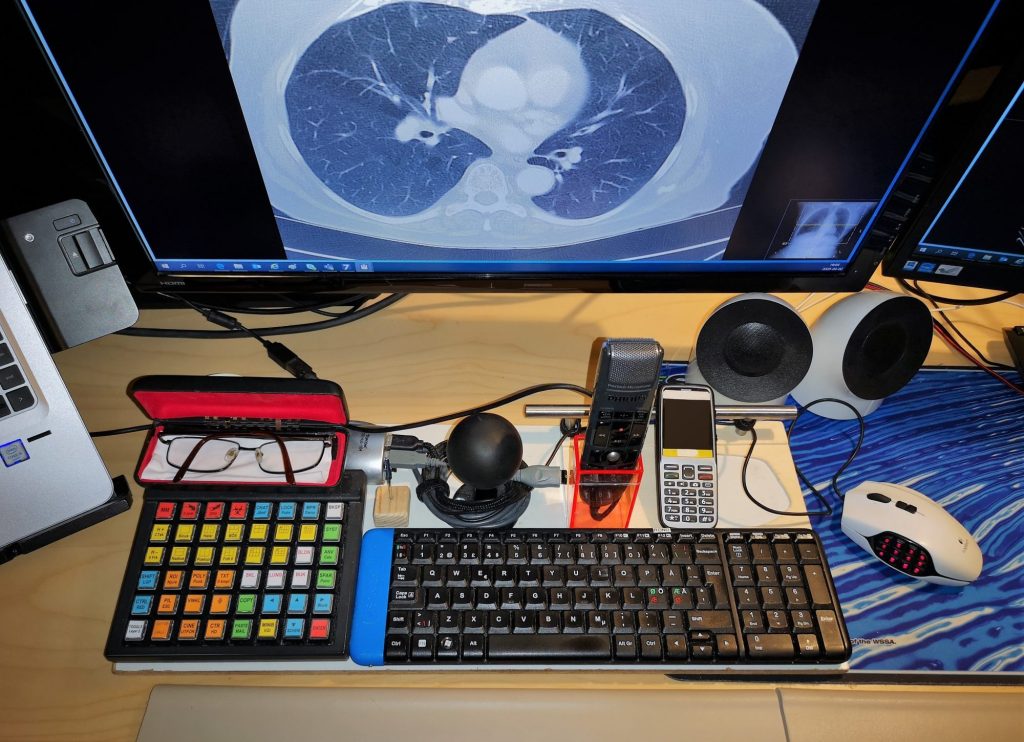Sectra: How has your work situation changed due to the COVID-19 pandemic?
Mattias: Me and many of my colleagues now must review exams from home, which is working very well. The recommendation to work from home as much as possible is partly to minimize the risk of being infected when commuting to work, but also to prevent us being exposed to each other. For the past two weeks, I’ve been working from a room in my basement.
Some of my colleagues still have to work at the hospitals, but they have taken several actions to minimize the risk of being infected. Lunch breaks have been redistributed, meetings are taking place in larger rooms or via Skype, and training of residents is no longer taking place at workstations but in MDT rooms, for example.
How have workloads and types of exams changed?
Well, the schedule has changed quite a bit. Many patients scheduled for radiology exams don’t want to come to the hospital due to the risk of infection. Also, we are not seeing as many acute cases coming in, which indicates a tendency among people to delay seeking medical care until the crisis has abated. We are also being affected as a result of more radiologists on sick leave because of enforcements to remain at home even with the mildest of symptoms.
All in all, we have noted a decrease in workload so far, but we have been able to fill cancellations in most cases. This will most likely change over the coming weeks as we get more pneumonia to diagnose due to COVID-19 infected patients.
As a radiologist, are you in any way involved in the COVID-19 diagnostics?
Yes, we have received cases in order to confirm pneumonia, both CT and CR examinations. The intensive care unit and the temporary care stations built contain mobile modalities for COVID-19 diagnostic purposes. These images are imported into the centralized image archive and diagnosed by us.
Furthermore, the Swedish Society of Radiology (Svensk Förening för Medicinsk Radiologi) has sent out guidelines on how we should work, which has been very good. Of course, we also read international guidelines.
So far, no radiologists here have been reassigned to take direct care of COVID-19 patients, as we have seen, for example, in Italy.
So, to the most important question, what is your workplace at home like?
I really like my home workplace. I have my laptop connected to two larger external monitors and use the laptop screen for worklists and patient information. This gives me the same three-screen setup as I have at the hospital, so display protocols will work exactly the same.
In February this year, we started with a PACS-driven workflow, which considerably facilitates the review since there is no RIS that I need to log into anymore. That used to take quite some time. Thank God we did that transition before the COVID-19 outbreak! In addition, speech recognition is completely integrated into the PACS, which makes it very convenient to dictate.
My workstation is connected to the central system via a secure VPN tunnel administered by Region Skåne. The Internet I use is a regular home fiber connection, with a 100 Mbps download speed and 10 Mbps upload speed. With the VPN connected, the download speed is approximately 35 Mbps. This set-up works very well for me, and my review performance is as good as it is onsite at the hospital.
I also have a special mouse and keyboard that I have configured to be able to steer the dictaphone and use keyboard shortcuts. It makes me more efficient. Altogether, the ergonomics are good—however, I do miss my height-adjustable desk and the possibility to work while standing.
It’s also worth mentioning that our radiology department is currently preparing home-working kits for a broader roll-out to enable even more radiologists to work from home should the situation worsen.





